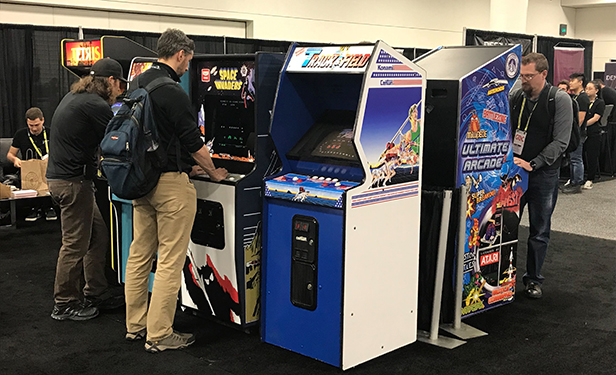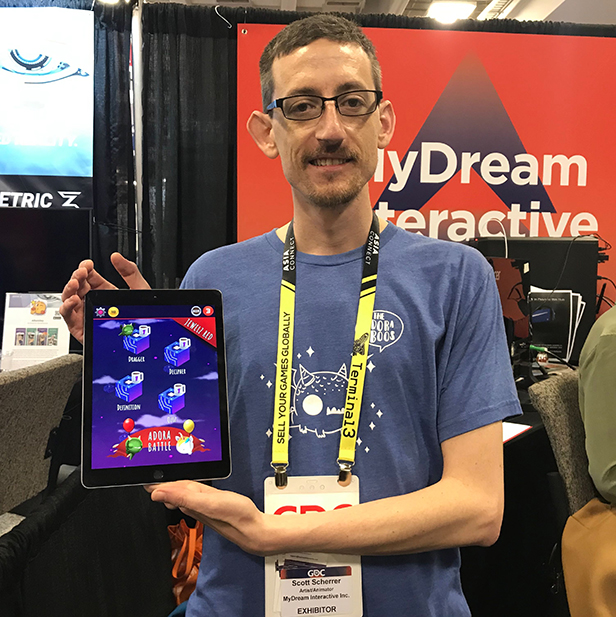Shake Up Your Event Design: Takeaways From GDC19

Attending events other than your own can spark innovative thinking, helping you transform or heighten the key elements of your own events. Registration options and processes, education, traffic flow, exhibition layout, entertainment, and food and beverage are just a few of the areas to consider shaking up.
The annual Game Developers Conference is organized by UBM, which in June 2018 combined with Informa PLC to become the largest B2B events organizer in the world. UBM’s portfolio includes trade shows and conferences across industries including fashion, life sciences, biopharma, manufacturing and technology — which gives its event designers and planners a wide variety of cross-industry event exposure.
This year, 29,000 attendees descended upon San Francisco’s Moscone Center for GDC 2019, held Mar. 18-22. The week-long event took over all three of the Moscone Center buildings, plus the adjacent Yerba Buena Center for the Arts Theater.
It’s not uncommon for events to grow or shrink from year to year, based on market fluctuations. GDC has consistently grown by adding sessions and activities (such as the co-located Indie Games Summit and Virtual Reality Developers Conference) designed to appeal to various audience segments.
GDC 2019 featured educational sessions, film screenings, award ceremonies, demos and an exhibition hall with more than 550 exhibitors showcasing the latest games, development tools and services. But just because GDC is a large event doesn’t mean you can’t take away ideas for smaller events — or even for larger ones. Here are a few areas to consider.
Registration
GDC attendees could choose from eight different badge types, many of which were combinations (such as GDC Conference + GDC Summits) or special pricing offers like a Student Expo pass. The Summits took place on Monday and Tuesday, while the Expo was only open Wednesday through Friday.
Takeaway: Can you (or should you) break up your audience by content type, demographics or days, or offer tiered pricing based on registration deadline dates? If revenue is a goal, it’s possible that you could make more money by offering a lower-cost option such as an expo only pass, or a group discount where if five people from one organization register at the same time, each person gets $100 off the regular price.
Staggering Sessions
Not all the sessions at GDC were timed to start and end together. There was a mix of 30-minute sessions, 60-minute sessions and film screenings. There were also demos, community spaces with special activities scheduled at certain times, and an expo hall that was open for the majority of show hours.
There weren’t overflow rooms at GDC, either. Instead, attendees were told in advance that sessions would be first-come, first served. Possibly due to the large number of options, I never had a problem getting into my first choice sessions even when they were popular.
Takeaway: If your event attracts a large number of people who are primarily there to walk your showfloor, it makes sense to have longer hours. If, on the other hand, sessions are the main interest, you may end up with happier exhibitors if you schedule dedicated expo hall time and have some breaks where they can attend sessions or get some work done themselves.
Session Content Types
GDC offered more than 780 lectures, panels, tutorials and roundtable discussions. The wide variety of formats gave attendees different ways to learn, based on their preferences.
One thing that stood out to me was the lack of true keynote presentations at GDC. There were “main stage” presentations, but even those were not scheduled as standalones. While this may not work for all events, it’s certainly something to consider.
Takeaway: Many conferences are moving away from having a full roster of traditional lecture-style presentations in favor of more interactive or participatory session styles, and changing up the seating from theater style to a mixture of seating types.
Exhibit Hall Layout
At many events, you’ll see a few rows of 10 x 10 booths around the perimeter of the halls, with the larger booths in more prominent, central locations. Often this is because the companies in those larger booths are major sponsors, paying premium prices for their spots.
While there was some of this at GDC, they also had some interesting layouts. And the halls were broken up by community spaces or areas dedicated to certain types of games, making it fun to walk every aisle just to see what you might come across.
Takeaway: Think about mixing up exhibitor booth types. Maybe the largest booths can be scattered throughout. Or you could offer a special pavilion just for one type of exhibitor, or turnkey pedestals for start-ups. Make your hall more interesting by including surprises, such as a candy station, game stop or even a cozy nook with books in it. The possibilities are endless.
Health and Wellness

Attending events can be exhausting. Giving your delegates opportunities and places to relax and recharge, and also to play, helps them get through the long days a little more easily.
This year, GDC added outdoor areas to relax, games to play — board games as well as video games — musical performances and for extra fun, a Pokemon Go Pokestop hosted by Niantic. Many of the exhibitors also had games and activities within their booth (not surprising, given that this was a gaming-focused event).
Takeaway: It’s not essential to have games at your event. But lounge areas with power strips and seating, quiet or meditation spaces, yoga classes, fun runs and other ways for your attendees to take a break from sessions are always appreciated – and help your event become more memorable.
Gaming as Education
Let’s not forget that games can also make education more fun. At GDC, I came across several exhibitors who offer ways to do just that. Here are two of the standouts:
Wonder Painter is an app that turns drawings into 3D images. At the very least, it would be a fun activity to offer — or, if you have developers at your organization who want to play with it, think of how you could turn your company logo or product story into something interactive during a keynote. The Wonder Painter team is based in China but is already working with companies all over the world.

The Adoraboos is a new game from Silicon Valley-based MyDream Interactive, which teaches the concepts of blockchain through a series of mini games (word scrambles, match-3, word finds, bubble popping, etc.) — and earns players real cryptocurrency. But there are even more applications within the corporate world.
The MyDream team can create technical and training games for any vertical industry or corporation. All they need is a file with the education curriculum, and they can work with you to tailor the training according to your requirements.
Takeaway: Why not look at new ways to train your conference attendees, employees, partners or staff? You could even create a game that could be used as a hall crawl activity, where attendees earn points by stopping by exhibitors’ booths and answering questions within the game. Or offer fun, interactive ways that attendees can get hands-on with your brand in new and innovative ways.
Hopefully, my experience at GDC has inspired you with some fresh, new ideas. Regardless, I recommend you attend a few trade shows, conferences, festivals, user group meetings or fairs — events that have different configurations and audiences than your own — to get your creativity flowing!
Don’t miss any event-related news: Sign up for our weekly e-newsletter HERE and engage with us on Twitter, Facebook, LinkedIn and Instagram!


Add new comment